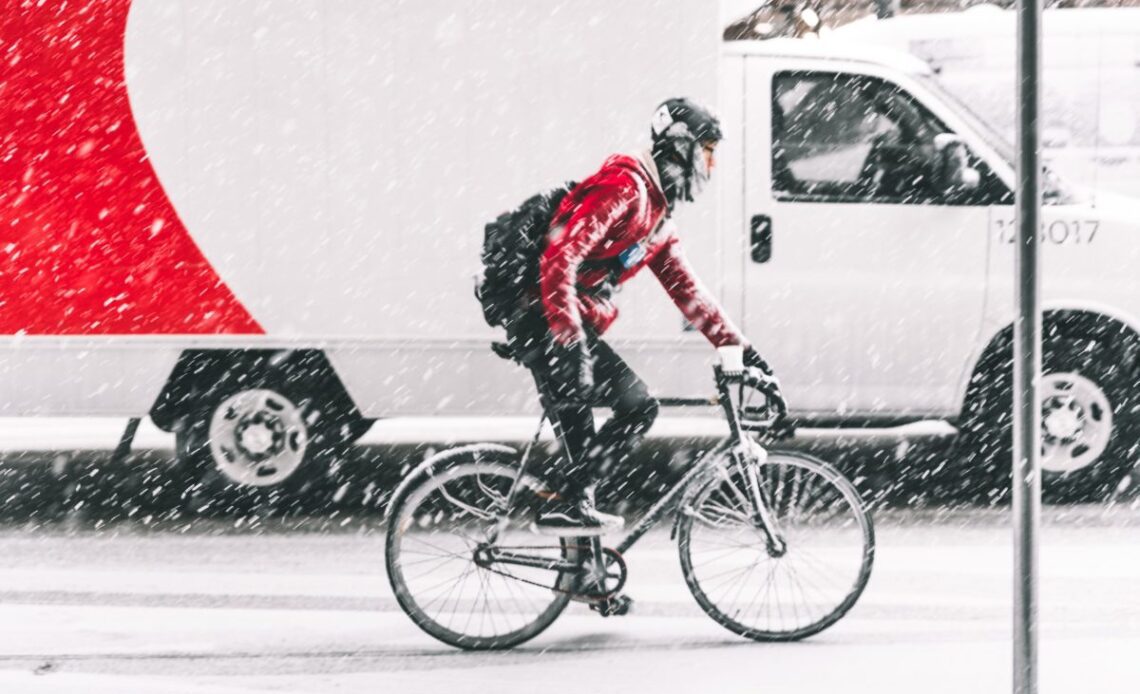Most Canadian cities are having their first, or even their second snowfall, but there’s no reason it should stop you from riding to work. With more people returning to the office, it means there’s going to be more cyclists out there riding. With the increase in cyclists over the past two years during the COVID-19 pandemic, you’re bound to bump into another rider you know in these cold months. Even with all the new riders out there, there’s no reason not to use your bike to get to and from work or school.
A winter commuting bike with fenders, front and rear lights, treaded or studded tires makes cycling through slush and snow completely doable. That being said, there are some things you should remember as you go riding in a winter wonderland.
1. Adjust your riding style to the conditions
This may seem obvious but it’s key to be extra-cautious when you’re riding in snow, slush and ice. The bike paths may have been cleared in the morning, but there may have been a fresh dump before your ride home. Be mindful of any icy ruts that lay beneath the snow, or new grooves that may have formed from other riders riding on it.
When it’s hovering around the freezing mark, it’s also important to be aware of black ice. If you see a puddle, it might not be wet , may be frozen and will definitely throw you off course on your way to work.
If you are riding through some snow or slippery slush, sit a little further back on your saddle and push a slightly harder gear to lower your cadence. A lower RPM will give you more stability.
2. Give cars even more room
Lousy motorists are the bane of any commute to work. It goes without saying that being a defensive rider is an unfortunate fact of life when it comes to riding in the city, but even more so in the winter. Car drivers can be extra unpredictable in crappy weather, either because of their inexperience with the conditions, lack of winter tires, or even time management. Drivers may not factor in the weather for their drive to work and find drive more aggressively than usual. Plus, just like on our bikes, they may mot notice a slippery section and find their car moving erratically. Of course, that’s not the cyclist’s fault, but it may mean giving motorists an even bigger wide berth. Depending on the city in which you live, you may or may not have adequately plowed bike paths, so passing cars on the right should be done cautiously or you may find a big pile of snow that was left behind by a plow or snow…
Click Here to Read the Full Original Article at Canadian Cycling Magazine…

